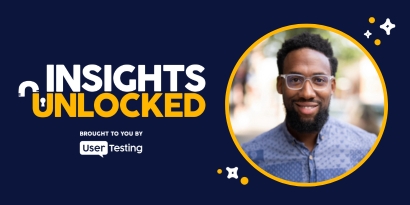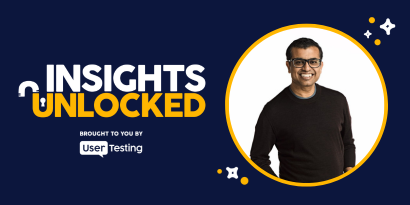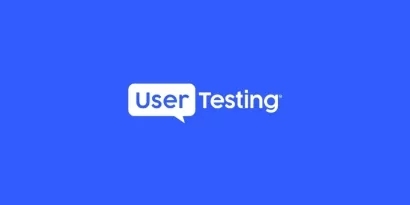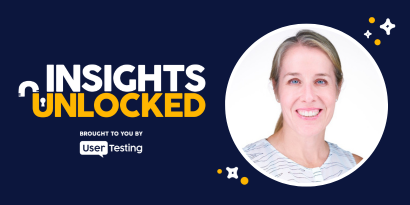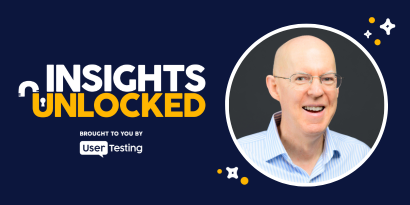
Episode 47 | July 02, 2022
Quantifying user experience with LinkedIn’s Kevin Newton
Discover how LinkedIn's Kevin Newton is scaling UX research and quantifying simplicity to connect user experience with business impact.
Why LinkedIn wants to quantify 'simple' in user experience
When was the last time you used a digital product and thought, “Wow, that was simple”?
You probably didn’t.
Simplicity, when executed well in UX, is nearly invisible. It just works. But how do you measure something that’s invisible? That’s the challenge Kevin Newton, Manager of UX Research Practice at LinkedIn, is working to solve.
In a compelling episode of Insights Unlocked, Kevin takes us behind the scenes at LinkedIn to explore how his team is scaling UX research and building a framework to quantify simplicity in digital experiences. His story blends practical strategies with visionary thinking—ideal for UX researchers, product designers, and business leaders alike.
Scaling UX research in a company of millions
With over 810 million users and nearly 50 million people using LinkedIn to search for jobs every week, the scale of LinkedIn’s user experience is staggering. Ensuring those experiences are intuitive, efficient, and accessible requires a coordinated research strategy that spans the organization.
Kevin sees scaling in two ways: scaling efforts and scaling impact. “When we talk about scaling our efforts, we talk about empowering people who do research or people who aren't researchers, who want to talk to customers and do some research,” he explained. “And through that, we're doing templates, we're doing programs… a basket of goodies like a discussion guide template.”
It’s a practical solution for a common UX challenge. In large organizations, product managers and designers often need fast answers but lack the time or training to run full-scale research. By equipping them with proven templates and research frameworks, Kevin’s team makes it easier for these stakeholders to gather valid user insights—without compromising quality.
As Kevin’s mentor famously told him, “Water always finds a way.” The research will happen. The key is making sure it’s done well.
GUIDE
Proving the ROI of UX research
Democratizing research without diminishing UX
This model of “empowered research” is sometimes met with hesitation. There’s a fear that democratizing research means diluting the value of UX researchers. Kevin addresses that head-on.
“We've pulled our own researchers and sometimes we're like, ‘Oh, should we really be doing this?’ The underlying fear is that we’ll give our jobs away,” he said. “And my response always to that is, trust me, no one wants to do your job. They have their own job.”
This speaks to the heart of a shifting UX landscape. In today’s fast-paced environments, user research is too valuable to live in a silo. Empowering teams with the right tools and guardrails ensures insights are discovered—and more importantly, applied.
The idea isn’t to replace UX researchers, but to amplify their impact.
Simple isn’t easy: the challenge of quantifying UX
Of all the insights Kevin shared, the most ambitious is LinkedIn’s effort to quantify what “simple” means in user experience—and tie it directly to business metrics like revenue. It’s an idea that could change how organizations think about product design.
“Simple is such an easy word. Everyone hears ‘simple’ and they're like, ‘Oh yeah, simple.’ But when it comes down to the psychology of those sorts of words, it's actually pretty complex,” he said. “What’s simple to you may be something different to me.”
To overcome this ambiguity, Kevin’s team is developing a "simple score." They’re synthesizing heuristics—both industry standards and custom models—into a coherent measurement system. These heuristics are validated through user testing and experience metrics to create a reliable index.
Once this index is established, it can be applied to live experiences and compared to performance data such as conversion rates or user satisfaction.
“If it works, we can show a relationship between our metric and the revenue or whatever the metric is,” Kevin explained. “Then create a prediction model where we say, ‘If you move this score one point, it will move revenue 0.01%,’ or something like that.”
This is more than just UX measurement—it’s business strategy. By tying user experience metrics to revenue, teams can make informed decisions backed by data.
The language of business: UX as a strategic partner
One of the most important themes Kevin highlights is the need for UX teams to speak the language of business. While many in design and research speak fluently in user empathy, usability, and task completion, these terms don’t always translate at the executive level.
“Speaking the language of business is something that is, in my experience, severely lacking within the user experience research community,” Kevin admitted. “And I could probably broaden that to say the design community.”
To address this, his team is focusing on connecting user insights with business outcomes. For example, they use Airtable to track design assumptions and usability testing outcomes. This allows for quick retrospectives and impact assessments, helping teams see the value of design decisions through measurable results.
They follow up with product teams 4–6 weeks after usability tests to ask, “Did you change this design? What was the outcome?” The answers help them track how UX recommendations influenced product improvements and business KPIs.
Turning insight into influence
At its core, Kevin’s philosophy is about embedding research into the entire product lifecycle—not just as a phase, but as a mindset. He encourages researchers to shift from reactive to proactive. To lead, not follow.
That means asking tough questions:
- Does a UX researcher need to lead this project?
- Are we bringing stakeholders along the journey?
- Are we tracking the impact of our work?
“We have to get out of the idea that our value is just in execution,” he said. “Our value is in our ability to influence.”
This is a call to action for UX professionals. As customer expectations grow and digital ecosystems become more complex, user insights are no longer optional—they’re mission-critical. And the ability to demonstrate ROI from UX research is fast becoming a competitive advantage.
Measuring the invisible: the future of UX
The work Kevin’s team is doing at LinkedIn—scaling UX research, empowering non-researchers, and quantifying simplicity—represents the future of UX strategy. It’s about bringing clarity to complexity, just like design itself.
Quantifying user experience may sound daunting, but it’s a necessary evolution. “We've all seen the investment in UX really move at an accelerated pace,” noted co-host Dana Bishop. “And we’re having more conversations about really being able to measure the ROI on that investment.”
By building bridges between UX and business, Kevin’s team is showing what’s possible. They’re not just designing better experiences—they’re proving the value of those experiences in language the entire organization understands.
Final thoughts
Kevin’s journey is one of transformation—of how we think about user experience, how we measure it, and how we scale it across teams. It’s a reminder that behind every interface is a person, and behind every product decision should be a deep understanding of that person’s needs.
As UX continues to evolve, the ability to quantify and communicate its value will define which organizations lead—and which follow.
“Why don’t we talk to people first and see what their world is like?,” Kevin said. “What problems are they trying to solve? Then build something to solve that—and they’ll buy it not because of a commercial, but because it works.”
Episode links:
- Democratize and scale UX research: This 90-minute session explores how empowering your entire organization to gather, analyze, and act on user insights can be an effective strategy. It covers topics such as why democratizing feedback is effective, what to democratize, potential problems and solutions, and how to use democratization to make the research function more strategic and respected.
- The complete guide to user interviews: This comprehensive guide delves into user interviews as a UX research technique, covering how they improve the product development lifecycle, different types of user interviews, when to conduct them, and how to run successful sessions. It also highlights how UserTesting’s Live Conversation can facilitate user interviews.
- Calculating the ROI of UX research in your organization: In this episode of the Insights Unlocked podcast, Dave Kerry, UserTesting’s Global Value Engineering Director, discusses the significant role of UX in shaping business strategies through measurable outcomes. He addresses the gap between UX research teams and executives and emphasizes the importance of demonstrating the business value of UX research.
- How to build a business case for user feedback: This blog post provides guidance on relating customer experience to organizational goals to build a compelling business case for user feedback. It emphasizes the importance of aligning UX initiatives with business objectives such as revenue growth and customer retention to persuade executives of their value.
